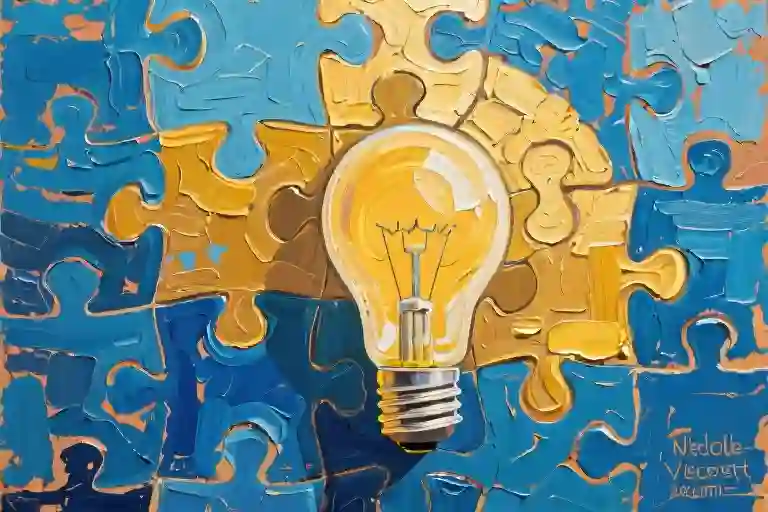The bathroom tiles press cold against your bare legs as you sit motionless in the midnight silence. A single drop of water escapes the faucet—plink—counting seconds no one will witness. Your phone lies face down, its last notification still burning behind your eyelids: Thanks for your help today! followed by three exclamation points that somehow make the ache worse.
You trace the grout lines with your fingertip, wondering absently about the last person who touched these tiles. A construction worker? A previous tenant? Someone who never imagined their handiwork would become the stage for this private unraveling. The thought flickers, unbidden: If I disappeared right now, how long until someone noticed?
Not the polished version of you that smiled through back-to-back meetings. Not the reliable friend who remembered everyone’s coffee orders. The real you—the one currently pressing palms against sternum as if trying to physically hold together what feels like shattering.
This isn’t about escape. The weight you carry isn’t something you’re trying to abandon—it’s something you desperately wish someone would help you carry. That paradoxical urge to simultaneously vanish and be found isn’t weakness; it’s the psyche’s Morse code for connection.
Neuroscience confirms what your tear-soaked nights already know: emotional loneliness activates the same brain regions as physical pain. When society rewards constant availability yet offers little true attunement, the mind interprets disappearing as a viable painkiller. But like any analgesic, the relief is temporary—what your nervous system actually craves is the antidote of safe, sustained connection.
You’re not malfunctioning. That hollow sensation behind your ribs when you laugh too brightly at a coworker’s joke? The way you sometimes drive past your own exit just to prolong the solitude of the car? These aren’t failures—they’re evidence of an exquisitely sensitive human trying to navigate a world that often mistakes visibility for intimacy.
Right now, in this quiet moment where the only witness is your reflection in the medicine cabinet mirror, remember: the most radical act of self-preservation isn’t vanishing—it’s allowing yourself to be seen, exactly as you are in this imperfect, trembling, wholly worthy moment.
The Silent Crisis Behind Smiling Faces
You know that moment at a dinner party when laughter rings hollow in your ears? When your cheeks ache from maintaining the perfect smile while your mind races through escape routes? This is the paradox of modern emotional survival – we’ve mastered the art of appearing okay precisely when we’re drowning.
Recent workplace studies reveal 89% of professionals actively suppress emotional distress during office hours. But the statistics only tell part of the story. The real tragedy unfolds in those intimate, unguarded moments when the mask slips:
1. The Bathroom Breakdown
That sudden urge to excuse yourself during a cheerful gathering isn’t about digestion. It’s the body’s last defense against emotional overflow – the desperate need for four tiled walls to contain what social decorum cannot. The cold porcelain against your forehead as muffled sobs compete with running water creates a perverse sanctuary.
2. The Vanishing Post
Your thumb hovers over the delete button for the seventeenth time. That vulnerable caption exposing your loneliness first felt like liberation, then like standing naked in Times Square. The backspace key becomes your shield, each erased word rebuilding the acceptable facade. Social media transforms into a hall of mirrors reflecting only what you dare to show.
3. The Intentional Miss
Walking past your train platform becomes a silent rebellion. Those extra forty minutes wandering dark streets aren’t about transportation – they’re stolen moments where existing without performance becomes possible. The rhythmic click of heels on pavement forms a temporary ceasefire in the war between who you are and who you’re expected to be.
These aren’t random behaviors but carefully coded distress signals. When emotional loneliness reaches critical mass, the psyche devises ingenious ways to simultaneously cry for help and remain invisible. The bathroom stall becomes a confession booth without a priest, the unsent post a diary without permanence, the missed train a protest without placards.
What makes this ‘smiling depression’ particularly insidious is its camouflage. Unlike classical depression where withdrawal is visible, high-functioning sufferers become emotional contortionists – bending their pain into socially acceptable shapes. Colleagues praise your resilience while your inner voice whispers: “If they knew how hard this is, would they still respect me?”
The exhaustion comes not from the pain itself but from the Olympic-level effort required to hide it. Like carrying a lead-lined emotional backpack through daily life, each suppressed sigh adds weight until the shoulders ache with invisible bruises. No wonder disappearance fantasies offer such seductive relief – they promise what society denies: permission to stop pretending.
Yet within these very behaviors lies an encrypted truth. Every aborted bathroom cry carries the subtext: “Notice I’m struggling.” Each deleted vulnerability whispers: “Ask me if I’m okay.” The intentional lateness shouts: “Someone please care that I made it home.” The art of vanishing is ultimately about the desperate hope of being found.
Tomorrow, when you feel that familiar urge to dissolve into the background, pause. That impulse isn’t your failure – it’s your psyche’s imperfect attempt at self-preservation. The next time you witness someone’s carefully constructed normalcy, look closer. The most profound cries for help often wear the disguise of routine.
The Psychology Behind the Urge to Disappear
That moment when you’re scrolling through happy social media posts while fighting back tears? Or when you cancel plans last minute because pretending feels exhausting? These aren’t just random mood swings – they’re signals from a deeper psychological pattern we all share when emotional loneliness becomes overwhelming.
1. The Test Retreat Mechanism
You’ve probably done this: deliberately not texting first to see who checks in, or posting vague messages hoping someone will ask if you’re okay. Psychologists call this “protest behavior” in attachment theory – a subconscious test of relationships. When we feel emotionally invisible, we stage small disappearances hoping someone will notice the absence.
Recognize the signs:
- Creating situations where others must initiate contact
- Purposely leaving gaps in conversation to gauge interest
- Monitoring response times as emotional barometers
2. Emotional Numbness as Protection
Chronic emotional neglect trains the brain to mute its own distress signals. Like a fire alarm silenced after too many false alerts, your psyche starts interpreting “I want to disappear” as safer than risking another unheard cry for connection. This explains why many describe the urge as “not sad, just empty.”
Neurological insight: fMRI studies show social rejection activates the same brain regions as physical pain. When repeated without relief, the anterior cingulate cortex (pain center) actually decreases activity – the mind’s way of protecting itself.
3. The Existential Doubt Spiral
“If I vanished, would anyone truly care?” This isn’t drama – it’s the human brain attempting to quantify its significance. Existential psychologists identify this as “self-concept verification” – we need external mirrors to confirm our internal sense of being. Without regular validation, even temporary isolation can distort self-perception.
Breaking the cycle:
- Keep a “proof of mattering” file (saved nice messages/achievements)
- Practice “grounding presence” by listing 5 current sensory inputs
- Recall past connections as evidence against present feelings
4. The Perfect Acceptance Fantasy
Beneath every disappearance fantasy lies a quiet hope: that somewhere, someone would drop everything to find you. This isn’t neediness – it’s our primal attachment system seeking what psychologist Carl Rogers called “unconditional positive regard.” The painful irony? We often hide most from those we most want to see us.
Reframing the need:
What feels like “I want to disappear” often translates to:
- “I need permission to not be okay”
- “I want comfort without having to ask”
- “I crave being known beyond my functional roles”
The Bridge Between Isolation and Connection
These four mechanisms aren’t flaws – they’re your psyche’s creative attempts at self-preservation. The next time the vanishing urge surfaces, try this pivot:
- Name the specific lack (Is it understanding? Touch? Safety?)
- Identify one safe expression method (A song shared, a handwritten note)
- Start microscopically (15 seconds of vulnerability counts)
Remember: The depth of your desire to disappear precisely matches your capacity for meaningful connection. What feels like the end is often the buried beginning of learning how to be found.
The Psychology Behind Testing Withdrawal
You’ve done this before. Letting days pass without texting first. Watching your phone screen darken without a single notification. There’s a quiet experiment running in the back of your mind: If I don’t reach out, who will notice? This isn’t about playing games—it’s what psychologists call testing withdrawal, an unconscious check for emotional security.
Why We Conduct These Silent Tests
- The Safety Probe
Like dipping toes in cold water, we retreat to gauge reaction. That coworker you always lunch with—when you “forget” to suggest plans, does she initiate instead? The three-day silence after your birthday post—which friends check in? These aren’t manipulative traps but survival mechanisms honed by repeated emotional neglect. - The Invisible Report Card
Every non-response gets logged in your mental ledger:
- Dad still hasn’t replied to Tuesday’s message → Score: -2
- Roommate asked why I was quiet at breakfast → Score: +1
The math is heartbreakingly simple: Negative totals reinforce “I don’t matter” beliefs.
- The Paradox of Wanting to Be Stopped
That midnight walk where part of you hopes someone will call asking “Where are you?” The canceled plans where you secretly wish they’d show up anyway. As therapist Dr. Lena Wu notes: “Testing withdrawal often contains a whispered plea—’Prove me wrong about being forgettable.'”
Breaking the Cycle
For Those Testing:
- Name the pattern: “I’m withdrawing to test care” makes it conscious
- Set measurable thresholds: “If 2 people reach out this week, I’ll accept evidence of care”
- Practice directness: Swap silent treatment for “I need reassurance today”
For Those Noticing Tests:
- Spot the submerged message: Withdrawal often means “I’m scared to ask for attention”
- Respond consistently, not excessively: One “Miss you!” text holds more weight than five panicked calls
- Create safety: “You never have to disappear for me to see you”
The tragedy of testing withdrawal isn’t the experiment itself—it’s how often the results confirm our deepest fears. But what if we’re using broken instruments to measure love?
The Numbing Side Effect of Emotional Overload
You know that feeling when your emotions flicker like a dying lightbulb? One moment you’re fully present, the next you’re watching your own life through frosted glass. This emotional anesthesia doesn’t happen overnight—it’s the cumulative effect of too many unprocessed feelings piling up like unopened letters in a forgotten mailbox.
The Slow Fade of Feeling
Emotional numbness often masquerades as ‘being strong.’ You might notice:
- Laughing at appropriate moments while feeling nothing behind the smile
- Reading tragic news with disturbing detachment
- Physical exhaustion without clear cause (your body carrying what your mind won’t)
Neuroscience explains this as the brain’s emergency shutdown—when the amygdala gets overwhelmed, it hands the reins to the prefrontal cortex, turning lived experience into something more like watching a documentary about your own life.
The Disappearing Act We Perform on Ourselves
This numbness creates a cruel paradox:
- We mute our pain to function
- The muting makes us feel invisible
- Invisibility intensifies the original pain
Like applying local anesthetic to a broken bone, it solves nothing but makes us temporarily unaware of the damage. The danger isn’t just in what we stop feeling, but in what we stop noticing—the quiet voice that whispers “This isn’t right” before going silent.
Reconnecting With Your Emotional Compass
Rebuilding emotional capacity requires gentle, consistent effort:
Micro-feeding your emotions
- Spend 90 seconds daily naming physical sensations (“cool fabric on wrists,” “tightness behind eyes”)
- Use a feelings wheel to identify three subtle emotions each evening
Creating safe spaces for thawing
- Designate a “feeling chair” where you allow any emotion without judgment
- Play instrumental music that matches your internal weather
The 5-4-3-2-1 grounding technique (particularly helpful when numbness borders on dissociation):
- Name 5 things you can see right now
- Identify 4 textures you can touch
- Acknowledge 3 ambient sounds
- Notice 2 scents in your environment
- Find 1 flavor in your mouth (even if just toothpaste residue)
When Numbness Serves a Purpose
Sometimes emotional anesthesia is necessary survival strategy—during crises, grief, or periods of extreme stress. The key is recognizing when the emergency has passed but the shutdown continues. Like keeping winter boots on in July, what once protected now only isolates.
A helpful question to ask: “Is this numbness protecting me from something current, or something that happened months ago?” The answer often reveals whether you’re looking at a healed scar or an untreated wound.
The First Signs of Thawing
As sensitivity returns, you might experience:
- Sudden tears at minor frustrations (your emotional scale recalibrating)
- Vivid dreams as your subconscious processes backlogged feelings
- Temporary overwhelm in crowded spaces (your nervous system relearning filters)
These aren’t setbacks but proof of reconnection. Like pins and needles when circulation returns, the discomfort means healing has begun.
“The opposite of numbness isn’t constant feeling—it’s having choice about when and how to feel.” —Dr. Sarah McKay, neuroscientist
Building Your Emotional Regulation Toolkit
For those who’ve lived in the gray zone of numbness, full-color emotions can feel blinding. These tools help modulate the brightness:
- The Window of Tolerance exercise: Sketch a window on paper. Left frame lists activities that calm you (like sipping tea), right frame notes energizers (like dancing). When emotions spike, choose from the appropriate side to stay within your “window.”
- Temperature bridging: Keep a bowl of ice cubes and warm pack nearby. When emotions feel distant, hold ice to shock your system awake. When overwhelmed, apply warmth to soothe.
- Emotional titration: Process difficult memories in 20-second bursts—long enough to acknowledge, short enough to prevent overwhelm.
Remember: Emotional numbness served you when nothing else could. Thank it for its service, then gently show it the door.
The Quiet Crisis of Self-Doubt
That moment when you stare at your reflection and wonder: Would anything change if I weren’t here? This isn’t melodrama—it’s the psychological equivalent of touching a bruise to see if it still hurts. The desire to disappear often masks a deeper crisis of selfhood, where you’ve become invisible even to yourself.
When Your Mind Erases You
Modern life has perfected the art of making people feel simultaneously overwhelmed and insignificant. You might recognize these thought patterns:
- The Comparison Spiral: Scrolling through social media while thinking “Everyone else has it figured out”
- The Echo Chamber Effect: Replaying past failures until they drown out present strengths
- The Emotional Chameleon: Adapting to others’ expectations until you lose your own shape
Neuroscience reveals this isn’t just metaphorical. When we experience social exclusion, our brain’s anterior cingulate cortex—the same region that processes physical pain—lights up with activity. Your urge to vanish is essentially the mind’s desperate attempt to stop the emotional bleeding.
The Paradox of Invisibility
What makes this particularly cruel is the double bind:
- You feel unseen, so you withdraw
- Withdrawal makes you feel more unseen
- The cycle reinforces itself
Psychologists call this “emotional disappearance.” Like a tree falling in an empty forest, you start questioning whether your feelings even exist if no one witnesses them. This explains why so many people describe their lowest moments with phrases like “I was there but not really present.”
Rebuilding Your Sense of Self
Breaking this cycle requires conscious countermeasures. Try these evidence-based practices:
1. The 5-4-3-2-1 Grounding Technique
When doubts arise, name:
- 5 things you can see
- 4 things you can touch
- 3 things you can hear
- 2 things you can smell
- 1 thing you can taste
This sensory checklist literally reconnects you with reality.
2. The “Before and After” Journal
Create two columns:
- Before: Write down anxious thoughts (“I don’t matter”)
- After: List concrete evidence to the contrary (“My cat greets me every evening”)
The gap between perception and reality often reveals how distorted self-doubt can be.
3. The Reverse Disappearing Act
Instead of withdrawing, practice micro-connections:
- Compliment a barista’s smile
- Send a meme to a friend with “This made me think of you”
- Leave a supportive comment on a creator’s work
These small acts of visibility reinforce your existence in the social fabric.
The Light You Can’t See (Yet)
Remember: The very fact that you worry about being insignificant proves you aren’t. Indifference doesn’t self-reflect. Your desire to be seen—even when expressed through disappearance fantasies—is ultimately a love letter to your own existence, written in invisible ink waiting to be held up to the light.
The Fantasy of Perfect Acceptance
Your fingers hover over the phone screen at 2:37 AM, caught between texting “I’m not okay” and deleting the draft for the twelfth time. This is what emotional loneliness feels like – not just the absence of people, but the aching gap between what you show and what you feel. Neuroscience reveals something startling: when researchers scanned brains of people experiencing social exclusion, the same neural pathways lit up as when someone feels physical pain. Your longing to disappear isn’t weakness; it’s your nervous system’s flare gun signaling unmet needs.
The Brain’s Betrayal
That heavy sensation in your chest when friends laugh over brunch while you mentally calculate escape routes? MRI studies show the anterior cingulate cortex – your brain’s conflict monitor – goes into overdrive during social exclusion. Meanwhile, dopamine levels drop like stones in water, creating that numb detachment where even sunlight feels filtered through gray gauze.
What we call “wanting to vanish” is often the brain’s misguided solution to protect you from perceived emotional threats. Like a confused immune system attacking healthy cells, your survival mechanisms mistake connection for danger when past wounds whisper “they’ll leave anyway.”
The Acceptance Paradox
Here’s the cruel irony your psyche constructs:
- You crave unconditional acceptance
- You believe it doesn’t exist
- Therefore, disappearing seems logical
This psychological trap snaps shut through micro-moments of disconnection – the seventh unreturned “How are you?” text, the coworker who never asks about your weekend, the family member who praises your achievements but never your essence. Each becomes a brick in what psychologist John Bowlby called our “internal working models” – subconscious blueprints of what we expect from relationships.
Rewiring the Expectation
Breaking this cycle requires conscious counter-programming:
1. Name the fantasy
Journal prompt: “If someone could perfectly understand me right now, what exactly would they know?” (Not “everything” – get specific: “That I’m terrified of failing as a parent” or “That compliments make me flinch because…”)
2. Practice graduated vulnerability
Instead of testing relationships with complete withdrawal, try controlled experiments:
- Monday: Share one genuine feeling with a safe person (“Work felt overwhelming today”)
- Wednesday: Ask for a small need (“Can we sit quietly together for 10 minutes?”)
- Friday: Receive a compliment without deflection
3. Create acceptance evidence files
When someone demonstrates understanding (even partially), document it physically – Post-it notes on your mirror, voice memos describing the moment. These become neurological counterweights to isolation’s gravitational pull.
That middle-of-the-night urge to erase yourself? It’s not a defective off-switch – it’s a distorted volume knob screaming “TURN UP THE CONNECTION HERE.” The relief you seek won’t come from vanishing, but from allowing certain eyes to truly focus on you, even if just one pair, even if just for moments at a time.
The Path From Invisibility to Being Seen
When the weight of unspoken emotions becomes unbearable, the desire to disappear often masks a deeper need—to be truly witnessed in your vulnerability. This section offers a graduated approach to transforming that longing into meaningful connection, meeting you where you are in your emotional readiness.
Beginner: Mapping Your Invisible Moments
Start by keeping a simple Emotional Visibility Journal (download our printable template for guidance). For one week, note:
- When: The time/day you felt most compelled to vanish (e.g., “Tuesday 3PM, after team meeting”)
- Where: Physical and emotional context (“Office bathroom stall, feeling inadequate”)
- Body Signal: Physical sensations accompanying the urge (“Tight chest, numb fingertips”)
This isn’t about analysis—it’s pattern recognition. As one therapy client shared: “Seeing ‘Sunday evenings’ appear three weeks straight revealed my dread of performative socializing.”
Intermediate: Controlled Vulnerability Experiments
Choose one safe person using this checklist:
☑️ Someone who’s consistently shown non-judgmental listening before
☑️ Someone not currently overwhelmed with their own struggles
☑️ Someone you don’t depend on for survival needs (housing, income, etc.)
Try this script: “I’ve been practicing noticing my emotions, and I felt [emotion] when [situation]. I’m not asking you to fix it—just acknowledging this helps.” The limited exposure (like sharing 20% of your feeling) builds confidence.
Advanced: Creating Reciprocal Support Systems
Transform one-way vulnerability into mutual care with these steps:
- Co-create rules: “Can we agree to never use ‘you’re overreacting’ in our check-ins?”
- Design rituals: Monthly coffee dates where you alternate 15-minute uninterrupted sharing
- Establish boundaries: “I can handle medium-intensity talks after work, but need advance notice for heavy topics.”
“Our friendship deepened when we instituted ‘vulnerability timeouts’—a literal safe word when either needed to pause.” —Mark, 29
3 Warning Signs of Emotional Overextension
Even healthy connection requires self-monitoring. Watch for:
- The 24-Hour Rule: If sharing leaves you feeling raw for over a day, scale back next time
- One-Sided Tracking: Keep rough mental tallies—it shouldn’t always be you initiating deep talks
- Physical Tells: Frequent colds or tension headaches may signal subconscious resistance
Remember: This isn’t linear progress. You might journal for months before attempting Step 2, or cycle between stages—that’s normal. What matters is honoring your pace while gently stretching your capacity to be seen.
Tonight’s Tiny Experiment: Before bed, write down one emotion you hid today and imagine whispering it to someone who’d receive it kindly. That’s the seed of visibility.
When the Phone Finally Rings
The same bathroom tiles still feel cold beneath you, but now there’s a different kind of vibration – your phone lighting up with an unexpected name. That friend who somehow always calls at the right moment, as if they sensed the weight you’ve been carrying. Their voice comes through before you can compose yourself: “Hey, just checking in… you’ve been on my mind.”
This is what being found feels like. Not dramatic search parties or missing person alerts, but the quiet certainty that someone cares enough to notice the subtle shifts in your emotional weather. That call becomes the first thread pulling you back from the edge of disappearance.
“Who could be your unexpected caller?”
Consider this your invitation to break the silence. Maybe it’s:
- The coworker who always brings your favorite tea
- Your childhood friend who remembers your tells
- That book club member who notices when you’re unusually quiet
Resources for When the Weight Returns
- Global Support Lines (Available 24/7):
- International Association for Suicide Prevention: Directory by country
- Crisis Text Line: Text HOME to 741741 (US/UK/Canada)
- Books for the Heavy Days:
- “This Is How You Survive” by Lola Jaye – Practical emotional first aid
- “The Lonely City” by Olivia Laing – Artistic exploration of urban isolation
- “Permission to Feel” by Marc Brackett – Emotion-naming toolkit
- Digital Safe Spaces:
- 7 Cups (free listener network)
- The Mighty mental health community
The bathroom light still flickers, but now you’re holding something warmer than your knees – the realization that disappearing was never about geography. It was about waiting for someone to say the magic words: *”I see you.” And maybe, just maybe, you’re ready to whisper back: *”Here I am.”*





